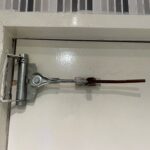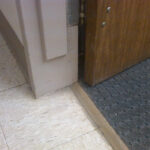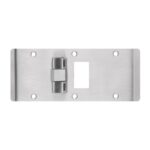 Are there any elevator experts out there? I’ve written a couple of posts in the past about information found in ASME A17.1 – Safety Code for Elevators and Escalators – one on elevator machine room doors and one on elevator hoistway doors. But elevators – and the ASME standard – are not within my normal area of expertise.
Are there any elevator experts out there? I’ve written a couple of posts in the past about information found in ASME A17.1 – Safety Code for Elevators and Escalators – one on elevator machine room doors and one on elevator hoistway doors. But elevators – and the ASME standard – are not within my normal area of expertise.
Last week, I was asked about another set of requirements found in ASME A17.1, related to fire department access on levels where the elevator doesn’t normally stop. In a blind hoistway, emergency access doors are required at every 3rd floor, but not more than 11 meters sill to sill. The clear opening of the door must be a minimum of 28 inches wide and 80 inches high. The door must be easily accessible without obstructions, and may be a horizontally sliding door or a swinging door. The door must be self-closing and self-locking, marked DANGER – ELEVATOR HOISTWAY. A door contact must prevent the elevator from functioning if the door is not closed.
From the hoistway side, the door must be able to be opened without the use of the key. Access from the landing side must be via a key cylinder (minimum 5-pin), and the cylinder must be keyed different from all other cylinders in the building. The key must be removable only when the lock is in the locked position. The key must be of Group 1 Security – addressed in section 8.1 of the ASME A17.1 standard, and the key must be available to emergency responders in an emergency.
So here’s my question: The standard requires the following barrier. Is this normally provided by the elevator company or is it something the door supplier would provide?
A hinged self-closing barrier independent of the door shall be installed across the entrance on the hoistway side at a height of 42 inches. The barrier shall not open onto the hoistway.
WWYD?
You need to login or register to bookmark/favorite this content.






Sounds like with all the requirements, and interconnections, it would be the elevator company
I agree with Charles. I can tell you that in my long career, our company did not supply anything for a passenger elevator, or an access door to the hoist-way. In fact, I don’t think we ever supplied a keyed cylinder either. On the other hand, we have supplied standard fire-rated hollow metal frames, doors and hardware for elevator equipment rooms.
Back in my days of installing Total doors as the smoke barrier door for elevators the few I ran across were the elevator companies to supply and install. Basically because of the specialized requirements and the responsibilities involved.
Just like when we’ve done doors on any type detention facilities those openings are usually always handled by the specialized suppliers.
We had one project that required a man door into the shaft to allow access to the elevator controls that were mounted in the hoist way. I have not seen this type of elevator setup again.
Hello… I am the person that ask Lori to ask around about this subject. After reviewing with the A/E and the Elevator Consultant it was determined that it is a standard hollow metal door and frame along with hardware. Our hardware set included hinges, storeroom lock, monitor strike, closer, gasketing and a door position switch. We noted that the monitor strike and door position switch to be monitored by security and/or elevator controls.